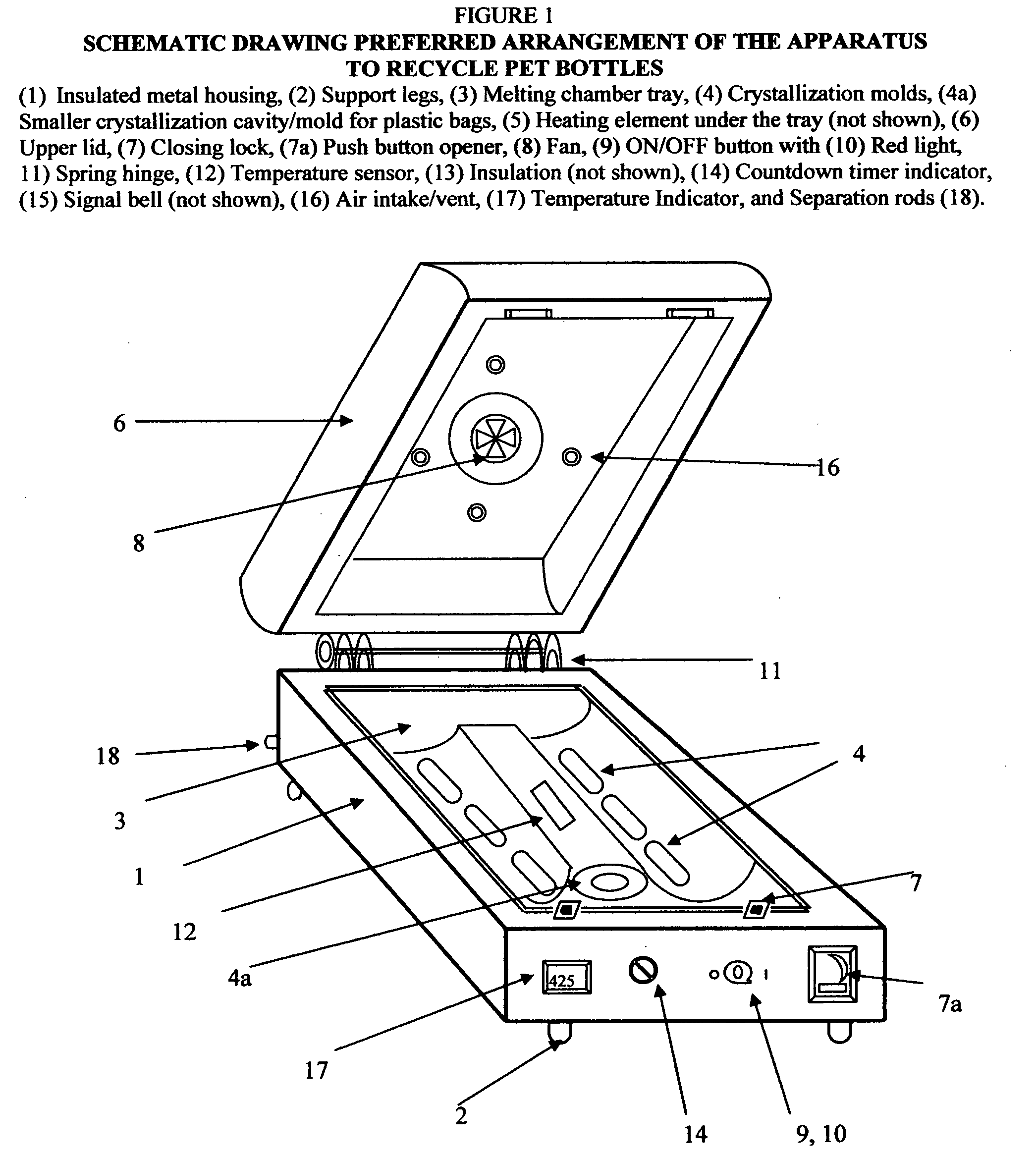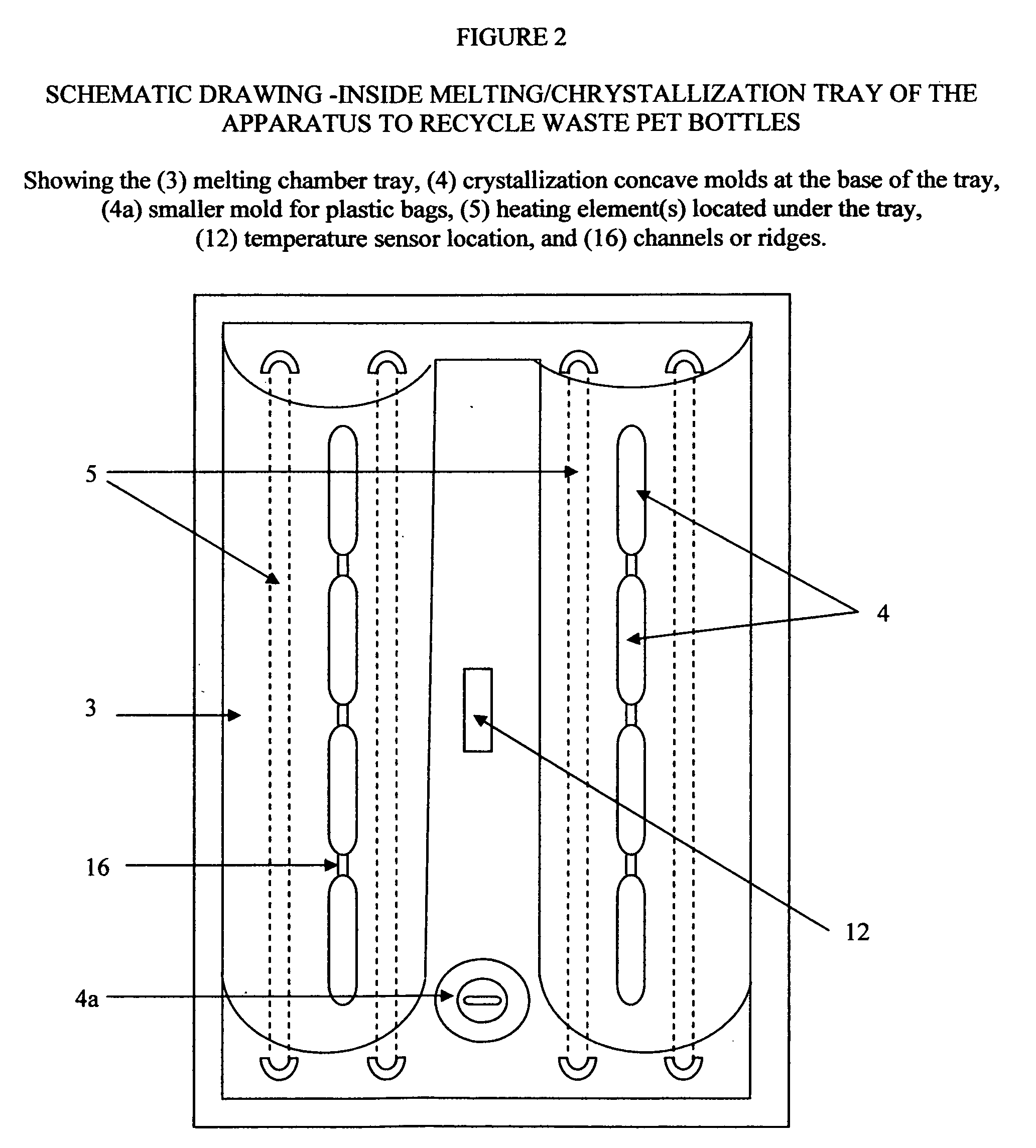Method and apparatus to recycle waste pet bottles
a technology of waste pet bottles and recycling equipment, which is applied in the field of methods and equipment to recycle waste pet bottles, can solve the problems of mixing bales, contamination and/or deterioration of recovered products, damage to machinery and tools, etc., and achieves the effect of low plastic melt viscosity and lack of robust constitution
- Summary
- Abstract
- Description
- Claims
- Application Information
AI Technical Summary
Benefits of technology
Problems solved by technology
Method used
Image
Examples
Embodiment Construction
[0033](Numbers in parenthesis refer to drawings)
[0034]Although the preferred embodiment of the invention is explained in detail, it is to be understood that the invention is not limited in its scope to the details of construction and arrangement of components set forth in the following description or illustrated in the drawings. The invention is capable of other embodiments and of being practiced or operated in various ways. Also, in describing the preferred embodiment, terminology will be resorted to for the sake of clarity. It is intended that each term contemplates its broader meaning as understood by those skilled in the art, and includes all technical equivalents which operate in a similar manner to accomplish a similar purpose.
[0035]The preferred embodiment comprises a reusable thermally insulated metal housing (1), having an upper and lower hollow body, with four legs for support (2), a melting chamber or chemical reactor configured with a removable tray (3) to hold bottles, ...
PUM
| Property | Measurement | Unit |
|---|---|---|
| length | aaaaa | aaaaa |
| temperatures | aaaaa | aaaaa |
| melting temperature | aaaaa | aaaaa |
Abstract
Description
Claims
Application Information
 Login to View More
Login to View More - R&D
- Intellectual Property
- Life Sciences
- Materials
- Tech Scout
- Unparalleled Data Quality
- Higher Quality Content
- 60% Fewer Hallucinations
Browse by: Latest US Patents, China's latest patents, Technical Efficacy Thesaurus, Application Domain, Technology Topic, Popular Technical Reports.
© 2025 PatSnap. All rights reserved.Legal|Privacy policy|Modern Slavery Act Transparency Statement|Sitemap|About US| Contact US: help@patsnap.com



